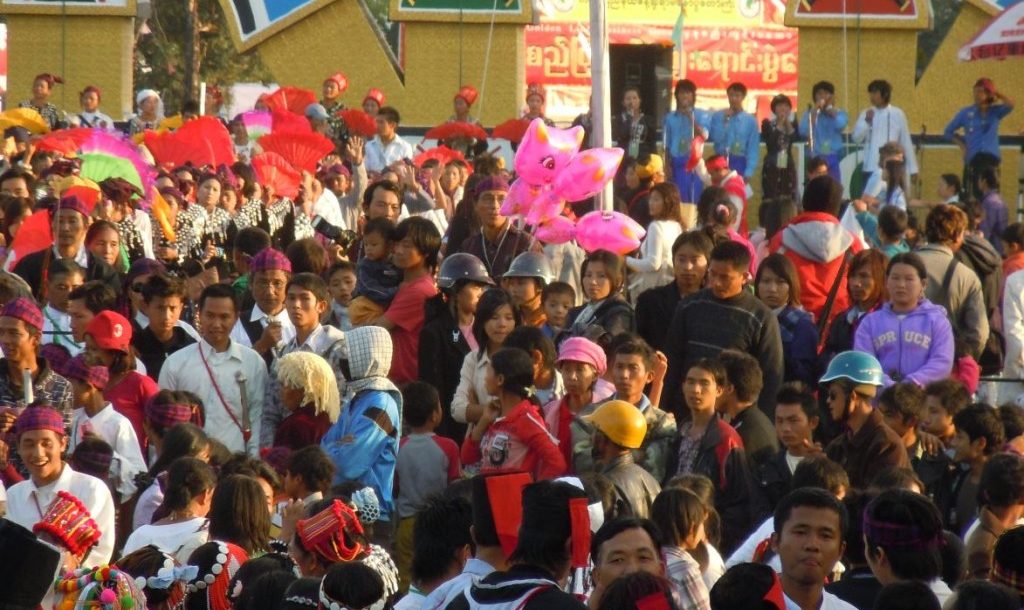This column was published in The Myanmar Times on Monday, 16 May 2016.
Once again the use of the self-designation “Rohingya” is getting hot-headed attention. In one camp are those who want to eliminate any reference to this ethnic claim. For them, the Rohingya are simply “Bengali”.
On the other side are those who embrace a people’s right to give themselves a name, even if it proves to be a new name, without substantial historical grounding.
New names – for peoples, for places, for countries – emerge all the time. My own multicultural society, Australia, and its people, the Australians, are both, by any standard, astonishingly recent creations. And yet we do not face sustained criticism for calling ourselves Australian.
The difference is fundamentally in how we think about the great movements of people that shape and then re-shape our lands. Migration is the oldest human story and one that we all share.
Myanmar has benefited from countless waves of migrants, from the north, south, east and, yes, also from the west. In almost any town in the country, you can see the evidence of these varied influences.
The official story still emphasises over 100 discrete ethnic categories. Some of these categories are well-understood, with a meaningful repertoire of culture, language and tradition. Others appear to be ethnographic artifacts, the legacies of colonial and post-colonial anthropologies that may never have accurately reflected local reality.
With temperamental and often traumatic politics, it has proved impossible to fix this system.
In response, it has made good sense, as a political tactic, for the Rohingya to claim the same status as other people who live in Myanmar. Their leaders appreciate that indigenous classification offers the rights and responsibilities reserved for the national races. This is the only available path toward citizenship and belonging.
This system – a muddle of contradictory and confusing ideas about unity and exclusion – must not be taken for granted. Under democratic conditions, it is unclear whether it should survive.
It helps that last year the National League for Democracy polled so very well in all parts of the country, including areas where ethnic issues are at the top of the agenda. The NLD even won 21 of the 29 posts reserved for Ethnic Affairs Ministers in State and Region governments.
For the first time, the country has elected leaders with popular mandates who can help to shape a new discussion about the role of ethnicity in Myanmar life.
Under the former military government, any effort to de-emphasise ethnic categories was, quite rightly, judged illegitimate. There was simply no mandate.
In 1993, the Yangon Region military commander, Lieutenant General Myo Nyunt, in his capacity as chair of the National Convention Convening Commission, proposed renaming the ethnic states with “neutral” geographical and historical designations. The National Convention adamantly rejected this proposal, and it has faded from memory.
Of course it did not help that the military dictatorship conducted brutal counter-insurgency campaigns. Under those conditions, it was inconceivable that minorities would ever surrender their ethnic banners.
But I wonder whether, in the years ahead, that could change. For now, the Myanmar people deal, on a daily basis, with the politicisation of their multitudinous ethnic categories. If you glance at an ID card, you can check the officially recorded ethnic background and religious affiliation of the bearer.
The problem is those records are rarely the full story. In fact, I cannot think of a close Myanmar acquaintance who does not have at least some level of multi-ethnic plurality in their family network.
This plurality is a hallmark of local society and could provide a chance for the NLD to shift the discussion about national belonging.
A potentially audacious move, in the years ahead, would be to remove ethnic and religious classification from government documents completely.
There would be howls of outrage – in fact, I think I can hear some already – but other valuable reforms might accompany such a significant shift. The groups most likely to feel disenfranchised by this possible change are those for whom ethnicity and religion are the centrepieces of identity.
Some Bamar Buddhists are clearly enamoured of their stronghold classification. In a similar way, there would be enormous reluctance among other groups, such as Kachin or Kayin Christians, if they felt they were losing official standing. Perhaps, for a time, people could opt in or opt out of the new culture of ID.
What would make such a system more attractive for all ethnic and religious groups would be commitments, on the part of the government, to support the things that matter.
At the end of the day, what is the point of ethnicity if your children cannot learn your language at school? And what if the government came to arrangements to better support all of Myanmar’s faith communities?
Properly funded changes to these and other cultural policies could prove hugely attractive. With a different mindset, there might even be a chance that such a reformed system has adequate space for the people once known as the persecuted Rohingya.
Nicholas Farrelly is a Fellow at the Australian National University and co-founder of New Mandala.
 Facebook
Facebook  Twitter
Twitter  Soundcloud
Soundcloud  Youtube
Youtube  Rss
Rss 